It occurred to me that beneath the surface of the
mundane in life exists our mythical realm, the place
where dreams come from, or where we find solace in
times of meditation or contentment. When riding in
the car on long trips as a child, I would stare
trance-like for hours on end as landscapes and
buildings whizzed by, transformed by the movement of
the car into new shapes and colors. The speed
created blur, the magical tool that put the world in
flux. No wonder, then, that I became fascinated
with the odd images produced at the beginning of a
film roll, and sometimes the end, by winding the
film into place or winding it to end the roll.
Shots were taken, images captured without knowing,
and the motion of winding often shook the camera
enough to cause common problems for images: blurry
captures and unexpected blurred “panning” shots.
I was captivated by the melded colors, the odd
formations that were these “bad slides.” Mostly
those film images went into the trash immediately,
but occasionally stunning “pictures” emerged which
made me dreamy with wonder. Back in the film days,
it was practically unthinkable to waste film, to
just shoot rolls and rolls experimenting. Always
there was a need to be careful in the use of film,
as each roll first cost to buy then, of course, to
process. The cost encouraged technical expertise
and a “never miss a shot” ethic, other than to
bracket exposures from which to select a preferred
exposure.
Early Experiments with Motion
When the digital SLR (single lens reflex camera)
became affordable (for me it was the Canon 10D) the
idea of film and economy went right out the window
immediately. The film was prepaid and so was the
processing. No lab costs. This meant suddenly all
constraints of cost were now gone and the idea of
experimentation was immediate. Shoot, shoot without
a care. The images could be quickly and easily
deleted, and also could be burned to CDs if there
wasn’t enough hard drive space for storage. The
image could be instantaneously processed in
Photoshop and printed with results that rivaled
anything available from the lab. The workflow became
individuated. Photographer and processing lab
became one and the photographer became autonomous.
Experimenting with panning shots, where a moving
object such as a car is shot to be in focus while
the background becomes a blur of lines connoting
speed, became an obsession for me. Certain images
emerged which embodied the best results of this
technique such as “The Light Walkers” (I Hear
Music, Step into the Light, and Walk
Like an Egyptian). Captured in Vancouver during
a vacation trip, the figures move amongst richly
saturated backgrounds replete with motion and
color. The point of these photos is that they
launch the figure and us into a mythic realm, a
place that exists only perhaps to other creatures
imbued with special abilities, as dogs are endowed
with a sense of smell ten times beyond our
capabilities. When I began to capture these panning
shots consistently, it occurred to me that while
these images didn’t really exist in life yet were
here in front of me on paper or monitor, perhaps the
image signified another realm which exists beyond
our normal day-to-day perceptions but lies just out
of reach. Considering current string theory,
perhaps this notion is not so far fetched.
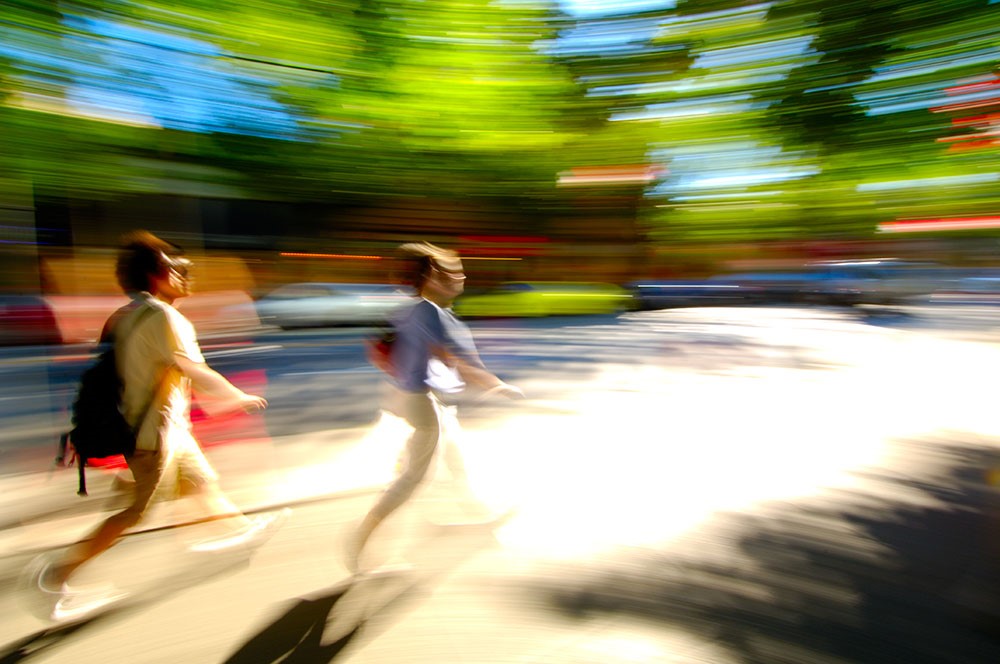 Step
Into The Light
Step
Into The Light
Foreground
Subject/Background Subject Photography
I began experimenting with reversing the technique
of panning a moving object, instead panning the
background itself while still focusing on the
object. I see this decision as akin to Brancusi’s
recognition of the base as equally as important as
the sculpture. This thinking began forming the
basis for what I now think of as “foreground
subject/background subject” photography. Placing an
equal emphasis on both aspects shattered traditional
confines for me.
Just as I had built jigs and machines to accomplish
certain processes in woodturning and sculpture, I
began experimenting with ways to control motion
through prescribed paths, using linear motion
rails. Moving Money was an early experiment
that allowed the blur of the stationary object to
become prominent as a design element in the finished
photo itself. The coin was still and the camera
itself moved along a course I had predetermined.
Shooting hundreds of images, I varied the motion,
the path, the blur, through bracketing and focusing,
until eventually one image emerged that captured the
essence of what I was shooting for. It was like
Jacob wrestling with the angel--after days and days
of struggling, finally the process gave up the
sought after prize.
The photograph seemed to me to reveal the unseeable
effects of light and motion that modern physics
explains through theories and formulas. I settled
for the results of the experiment alone, not needing
to understand how the universe actually works. To
have a part of it, a meager scrap would do. The
mystery of light and the transformation of objects
were illustrated to me by the process I had worked
out.
Moving Money
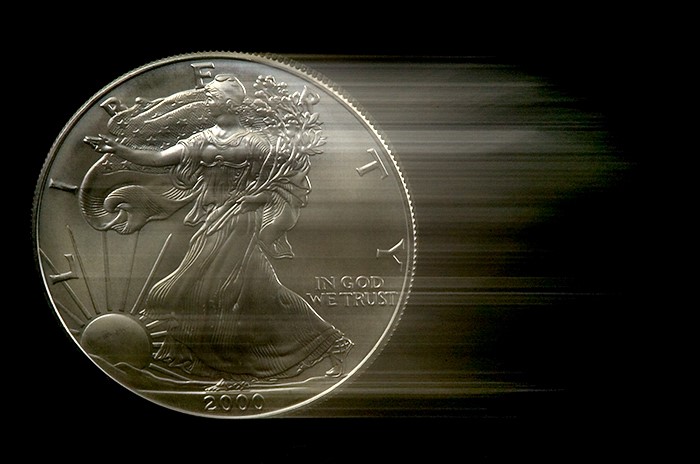
Armed with new knowledge and understanding about how
the effects of light and motion allow a glimpse into
the hidden realm, I began applying the technique to
photography of objects in nature, exploring form and
natural light. The first resulting image that
transcended the ordinary, visible world and entered
into the real but unseen world was Slit-Screen.
It was shot outdoors using an object of no
consequence to transform the components of the here
and now into the here but unseen.
The breakthrough had occurred earlier, actually,
when while shooting a dog toy as a still life, I
began playing with the motion techniques. The forms
and colors of Dog Toy create a “normal” image
that I appreciate as it is.
Dog Toy

But as I applied my motion technique, forms which
seemed like gifts from the machine (camera) began to
emerge, not quite perfect in terms of exposure, but
rather, an ideal example of the hoped for process of
shooting. With this breakthrough came the quest to
conquer or master the process, that I am to this day
still obsessed with. Early examples from this time
follow: Socked In, Icebergs Collide,
Sand Storm.
Socked In
Icebergs Collide


Sandstorm
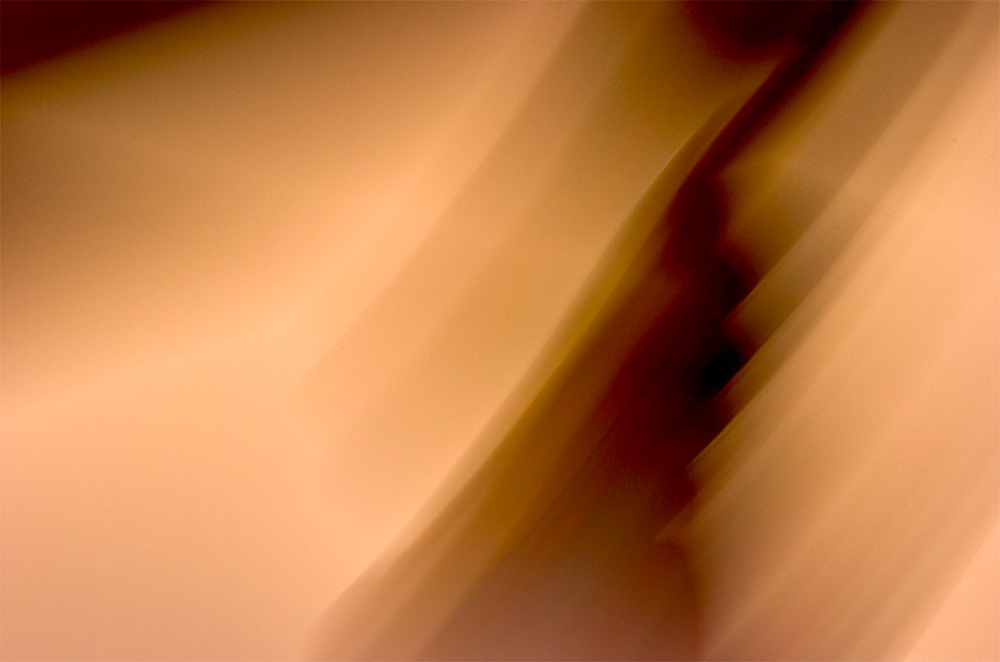
Although “noisy” (a term referring to digital
interference in current DSLR technology) the images
confirmed the potential of the process. As I
applied the technique to simple objects, one truth
became evident: the process could be used on
anything and could unlock the hidden world which
lies beyond the evident to yield the unperceived.
This process, while always possible, was and still
is extremely difficult and unstable. I think of my
yield, the number of useable images per number of
shots taken, as a ratio determined by the
craftsmanship and vision applied to any given
session. As a craftsman, I understand the
determination and discipline required to master
technique. To turn wood with mastery involves years
of disciplined practice. To do this kind of
photography requires the same commitment to time and
practice.
The
Technique
These early experiments lead to months of
practicing, attempting to master the techniques to
increase the yield. Slit-Screen emerged like
a strange visitor from another planet. In my view
it was glorious, an accomplishment that was an
example of this technique and an image which held
its own in the tradition of the abstract photography
of Edward Weston, et al, where an image taken out of
the context of the realm of daily life became
celebrated, perhaps, at least for me, achieving an
iconic state.
In Slit-Screen, the process, unwieldy and
unstable as it was gave up an early image that began
to fulfill the self-imposed requirements which form
the confines within which I currently work. It is
when the image becomes something that was never
there, but is instead transformed by the process,
that it makes a new essence based on light and
motion. It is a task of pulling light with the
camera, or perhaps pushing it, maybe coaxing it
along. It turns out that it must be a highly
technical process to achieve consistency or to go
beyond mediocrity or cliché, but the results are a
kind of drawing with the camera where the tool
becomes a stylus of sorts and the photograph becomes
more like a painting.
Slit-Screen

Gradually, it became clear to me that the camera
movement required to achieve consistent results was
not unlike the movements I employ as a woodworker,
woodturner, and sculptor. In woodturning, the
material moves (in fact it is all about movement)
and the tool is carefully manipulated through
various angles and pressures against the spinning
material. Slight repetitive motions, applying
subtle pressures, accomplish complex forms
translating to smooth surfaces and curves in the
material. Working wood often involves deft
manipulation of a tool such as a plane or a chisel
as it carves into the material held stationary in a
device such as a bench or vise.
But perhaps the most direct relationship is the
similarity of the use of the chainsaw in carving to
the use of the camera in this kind of photography.
Subtle motions emanating from the wrist yield
profound results at the tip of the tool. When I
worked on my chainsaw carved panels I endeavored to
create a new vocabulary reflecting the nature of the
tool. The cuts and crosscuts became extremely
precise while simultaneously expressive. It was the
line in motion though an imposed curve which
fascinated me. So I began to look for this aspect
in my “drawing” with the camera. I view the current
work as a translation of these studied techniques, a
craft involving the highest degree of hand/eye
coordination.
Mark Lindquist woodturning at the lathe, circa 1979,
Henniker, NH studio

Perhaps it is the essential aspect of rhythm
absorbed from my early training as a percussionist
that has formed the basis of my work. The motion of
the wrist, the control of the hand, guided by the
eye, enables the personal expression which emerges
throughout my development as an artist. Inevitably,
the craft which is imposed upon the process lies in
service to my vision. I employ the tools to that
end and view them as an integral part of the
process. Just as the lathe became for me an easel,
the means with which to hold the work, so too now
does the camera become that extension of my hand
that allows me to shape and carve light.
The interplay of positive and negative space is
sublimated through the aspects of motion and
stillness. Specular light dragged like the tool
steel of the spinning chainsaw tooth creates line
and defines form. Color is the palette of natural
light. The division of time into fractions of
seconds reveals the colors and enables the shaping
of light-form, while the focusing of the aperture
determines the quantity of colors and sharpness of
line. Coupling these basic aspects together, the
precisely controlled motion of the camera, the
correct reading of the light, the careful
synchronization of the elements, occasionally the
gift from this process is realized.
Selecting and Printing the Image
It is the referral to painting, drawing, and
sculpture in art historical association that enables
me to find the images amongst a wasteland of
exposures. Wading through countless captures, the
right one reveals itself through conscious
observation. That one lone image becomes separated
from the rest, which are the packing of this one
prize. I shoot and reshoot until I capture the
image in-camera, as did traditionalist modernist
photographers who sought to make perfect negatives,
requiring little editing, cropping or exposure
adjustment. One of my goals is to work within these
confines, applying sound photographic principles to
my work flow. This quest for purity of image in the
traditional photographic sense validates the printed
object for me as uniquely photographic, although the
final result blurs the lines between many graphic
disciplines.
For me, photography has come of age—it is no longer
“about photography”—it has become a tool that
enables me to explore light, motion, and form.
While wrestling with the process to achieve my
desired outcome, I find this is not unlike any other
approach to making art. It is seeing and testing
within a climate of belief and doubt, where light
and shadow occasionally dance together but mostly
are at odds with each other. When late afternoon
light, personal energy and enthusiasm, sleight of
hand, and high technology meet, the stage is set for
the serendipitous occurrence. Then sifting through
the hay to find the needle begins. Eventually I look
to see many needles and little hay. That requires a
life long commitment.
I set out to obey photographic rules of proper
exposure and to process the images using the most
advanced post-processing techniques in Photoshop
(the digital darkroom as it is often called) and in
the most suitable manner, using the best fine art
papers and inks which have the greatest archival
longevity. Keeping the colors in gamut proves to be
the most challenging aspect of using the most
favored fine art papers.
I began printing Slit-Screen on Epson Velvet
Fine Art paper using the Epson 2200 Ink Jet Printer
with Ultrachrome inks as it was the most affordable
printer on the market capable of producing archival
quality prints up to a size of 13” x 19”. Gradually
getting a handle on the digital darkroom workflow I
began to achieve museum quality prints which now are
the state-of-my-art for the current images.
Eventually, larger prints will become possible, as
the images from my cameras (the Nikon D2H and D2X)
can yield spectacular results at up-scaled sizes
that are appropriate. The aspect of post-processing
the images through carefully managed color workflow
is a tricky business.
Reflections on Chainsaw Carved Polychromed Plywood
Works
When I began creating chainsaw carved panels on
wood, I used techniques that came directly from the
world of woodworking but were modified to enable my
own avenues of expression. While swinging the
chainsaw across the surfaces, skating the blade, a
quick kind of drawing was accomplished, like
sprezzatura, a technique that embodies the essence
of the artist’s vision in a quick sketch. The
process required highly sophisticated techniques,
mastery of process, and purpose of vision.
“Wetland Series (De-Compositions)” - 1990s
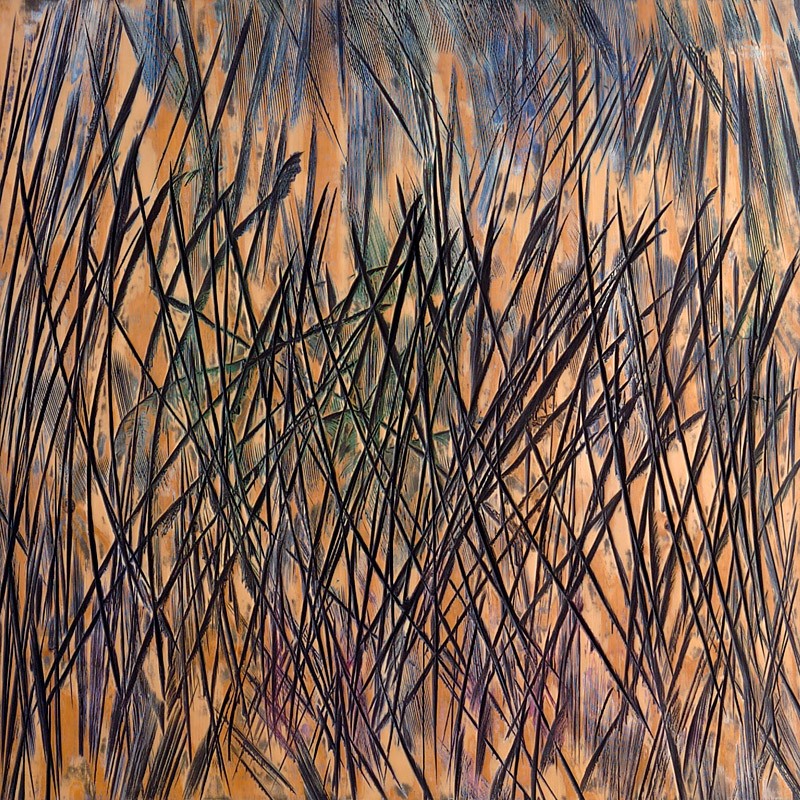
Photo: John McFadden / Lindquist Studios
In my “Stratigraph” and “De-Composition” pieces, I
referred to the work of the Abstract Expressionists
and began developing a vocabulary and vision of “a
modernist approach to postmodernism.” The objects
vacillate between tenets of high modernism and the
ambiguities of postmodernism, exploring the realms
of slipping signifiers and pastiche.
So too are my photographs explorations of modernist
goals and postmodernist commentaries regarding form,
painting, light, and expressionism. I refer, often,
to the approaches of period painters such as
Malevitch, making tongue-in-cheek references in the
titles of my photographs. (While the titles refer
to earlier artists and historical movements, there
are purposely no direct similarities between
images.)
Complex Presentiment: Quarter Figure Wearing a
Tangerine and Orange Shirt (left)
Kasimir Malevitch Painting (right)
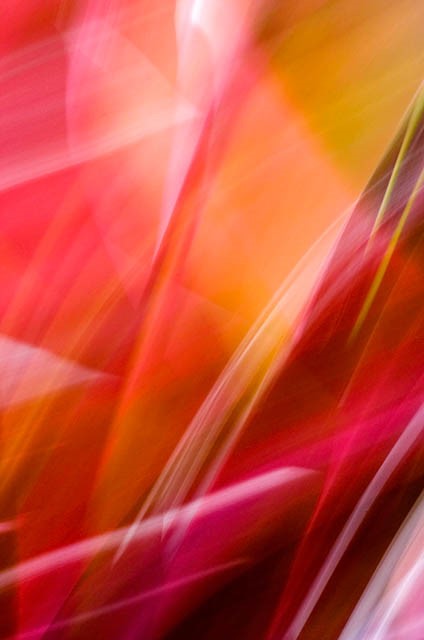
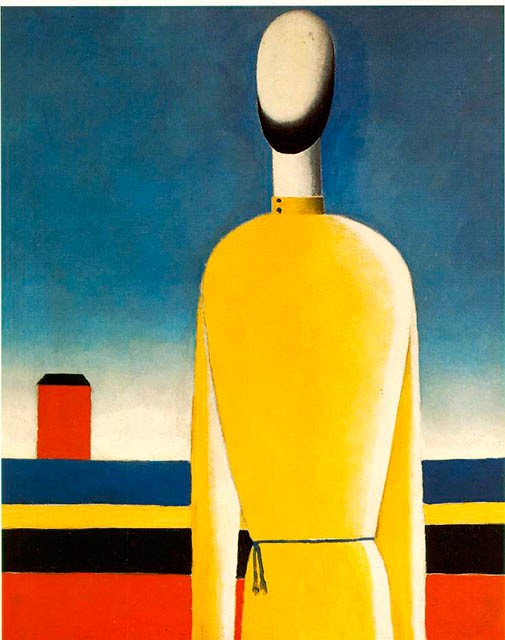
The Influence of Ukiyo-e Prints
While studying Japanese art history with Dr.
Penelope Mason in the late 80’s through early
nineties, I began a detailed enquiry into the design
principles of Ukiyo-e woodblock prints,
incorporating into my work such emotive concepts as
the steeper the angle the greater the drama within a
scene. Often Ukiyo-e images were tightly cropped,
producing a feeling of floating. The name Ukiyo-e
means just that: “the floating world.” I also
studied the influence of the design principles of
Ukiyo-e on the work of European painters of the 19th
century.
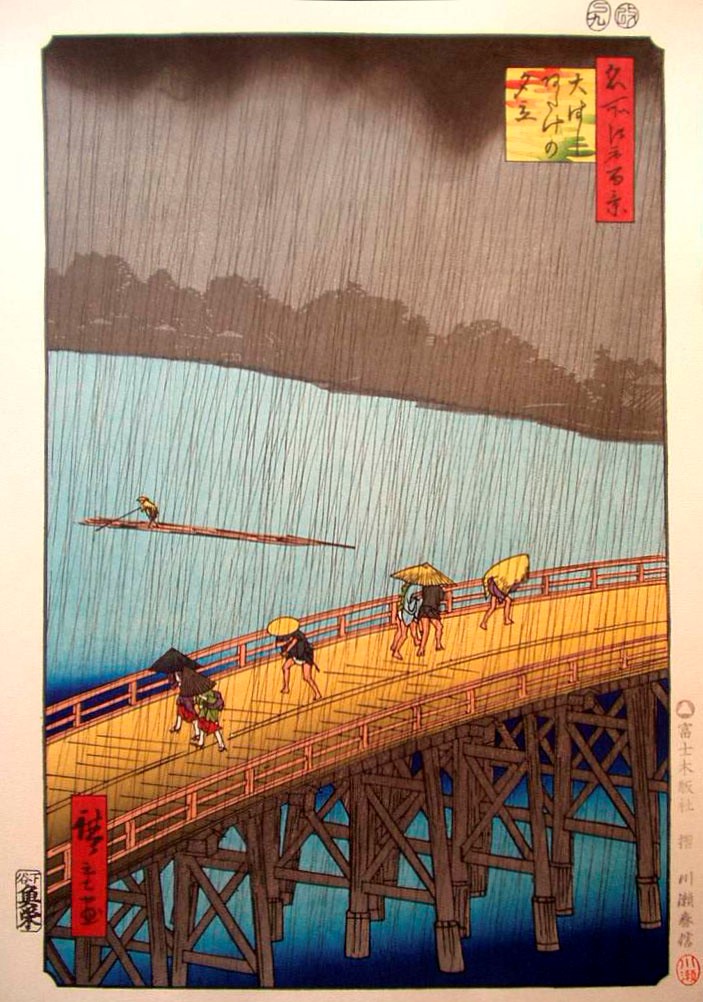

Just as van Gogh referred to Hiroshige’s famous
woodblock print Sudden Shower at Ohashi
(left) in his painting Japanaserie: Bridge in the
Rain, (right) I refer to van Gogh’s reference in
a carved and polychromed panel called “Sudden Reign”
(referring to the state of war), creating layers of
meaning. The pseudo-seal or chop mark on the left
is a graphic reference to van Gogh’s actual redux
painting of the woodblock print. The carved panel
is neither painting nor print but rather woodblock
itself reversing theindexicality of the process of
making a series of Ukiyo-e prints. I rearrange the
significations of the elements of the original
prints; whereas the figures in the prints by
Hiroshige are running, covering themselves from
ordinary rain, my figures are covering themselves as
they run from the rain/reign of terror, indicated by
the over-arching cloud-like figure which symbolizes
nuclear war, or terror coming from the sky. Using
the “copy” of van Gogh’s copy of a copy (referring
to the fact that prints are copies of an original)
as a stamp, means I call upon van Gogh’s act of
appropriation as a “seal of approval”—if it was okay
and good enough for van Gogh to appropriate and
refer to the image, then it is likewise okay for
me.
SUDDEN REIGN (Mark Lindquist 1990)
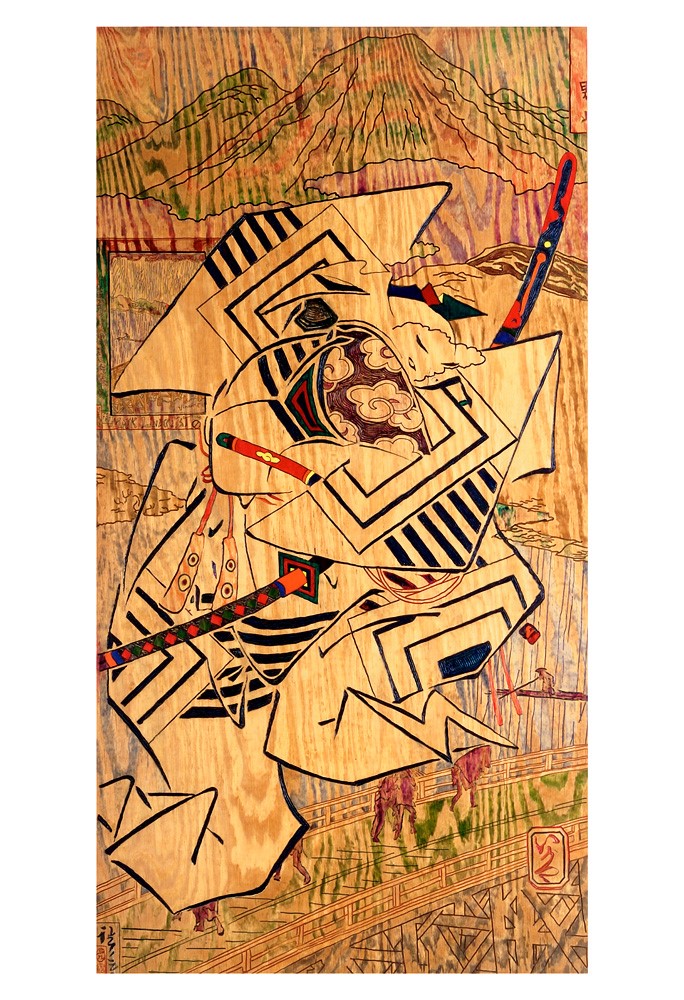
Photo: John McFadden / Lindquist Studios
Recently a sculpture of mine from that period has
been acquired by the Smithsonian Museum:
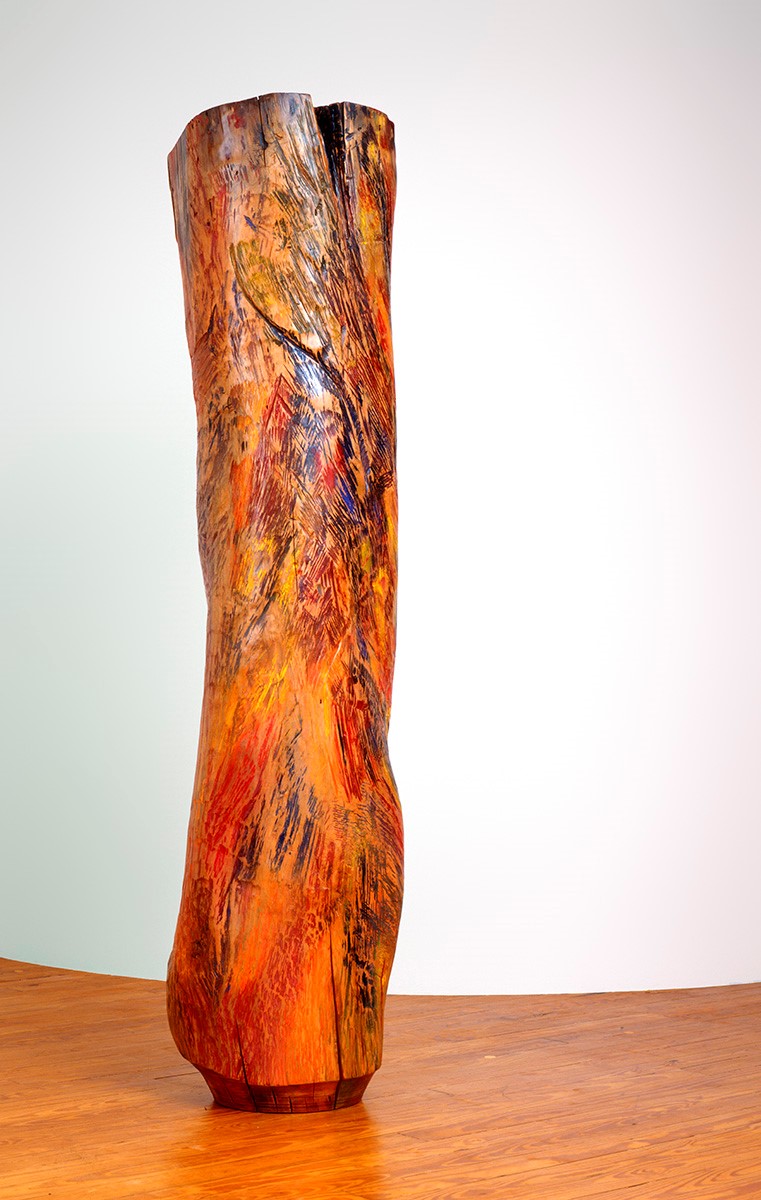
Mark Lindquist, Akikonomu
(Ichiboku Series), 1989, cherry and polychrome
Evolution of My
Photography
I am pleased to be coming back to photography in a
concentrated form at this point in the development
of my work. I began photographing seriously while
studying art in college in the late 1960s. Later,
my wife Kathy and I studied photography and fine art
black and white printing with Ron Rosenstock, who
had worked with Minor White at MIT. Kathy and I
shared a studio and darkroom in New Hampshire. She
became a free-lance magazine photographer, while my
interests were in pursuing photography as a form of
artistic expression in itself, as well as in
producing a record of my other artistic endeavors.
For over thirty-five years, I have practiced art
documentation photography, working professionally
for other artists and art institutions as well as
for myself.
Will Horwitt’s NYC Studio
photographed by Mark Lindquist, circa1980
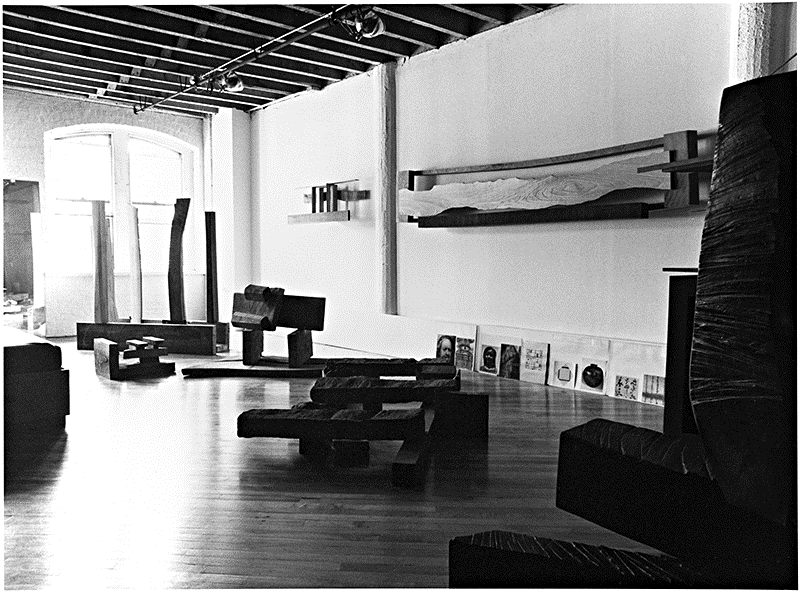
My early purely photographic works were in black and
white shot with a Mamiya M645 or an Arca Swiss 4 x 5
camera and processed in our darkroom, using a cold
light and Zone VI and other fine art papers. This
exploration of the black and white print culminated
in the late 1970s in the “Zone Line Series,” which
are 10” x 14” prints made from 4” x 5” negatives of
the surface of pieces of spalted wood less than two
inches square. The images transcended their
identity as wood, taking on the appearance of
Japanese brushwork, a theme that runs through my
work in all media. A one-person show of the Zone
Line Series photographs was held at the Kendall
Gallery in Wellfleet, Massachusetts, in 1980.
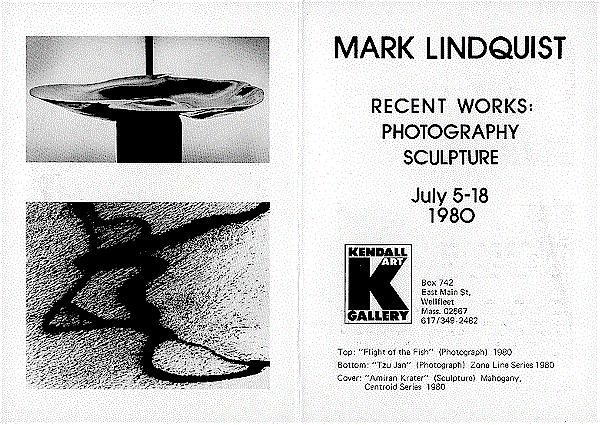
I have also used photography as a tool for
documenting craftsmanship and technique. In 1977, I
assisted Robert Whitley in the reproduction of the
presidential desk for the JFK Memorial Library,
photographing and patterning the original desk in
the Oval Office.
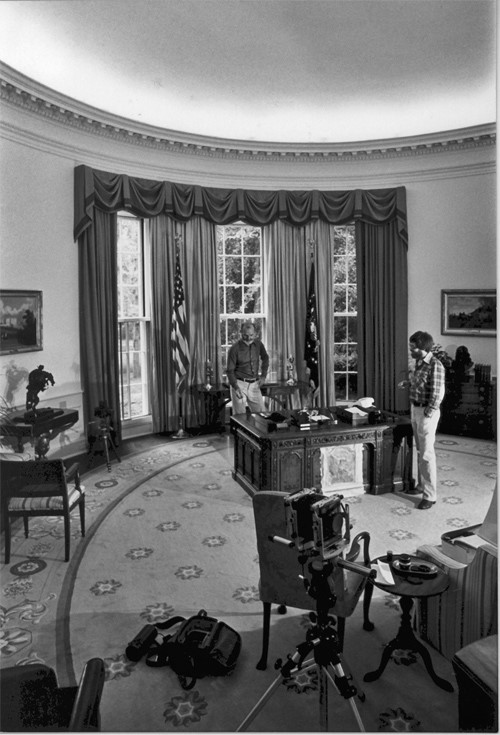

I worked with professional photographer Bill Byers
to produce the technical photographic series in my
book, Sculpting Wood, published in 1986. In
1992, I reproduced and photographed ancient clay
working techniques for a scholarly work on Japanese
art, written by Dr. Penelope Mason.
In 1996, I began using digital technology, using
the Polaroid PDC 2000 professional camera and
Photoshop version 4 as an image-editing tool. In
2004 I began photographing with the Canon 10D
Digital SLR, then moved to the Nikon D2H and D2X
professional systems, and have all but abandoned
film in favor of digital media.
The
Common Thread
A common thread throughout my work, no matter the
medium, the subject, or the technique, is the
presence of naturally occurring line. Since my
childhood days of working with my father, harvesting
and turning spalted wood (partially decomposed wood
marked with rich dark zone lines formed by
carbonaceous deposits), the use of natural line
reasserts itself continually in my work. I have a
trust in the natural formations and graphic patterns
that exist everywhere, believing that these natural
occurrences are the foundation of graphic art since
the beginning of mankind. Pattern and imagery, like
spalting or the cracking that occurs in wood, are
all around us both in this world and the unseen
world. Just as airflow patterns are viewed in
laboratory wind tunnels by adding smoke, to me the
camera and my process expose the unseen patterns
occurring in nature. In many ways this is like
cutting the log to expose the grain and, when
present, the naturally drawn lines of spalted wood.

The photos in this portfolio are printed on Epson
Enhanced Matte paper. I use(d) Epson Ultrachrome
inks in an Epson 2200 color printer. These
photo-abstract images are all in-camera photographs,
not manipulated or added to after the image has been
captured by the camera. I use(d) the Nikon D2H and
D2X cameras and process(ed) the photos with a
carefully managed color workflow on an Apple G5 Dual
2 Ghz Machine with 6 GB Ram. The works represent 2
years of endeavor with this process, after a
lifetime of study.
Mark Lindquist
December, 2005 Lindquist Studios | Quincy,
Florida